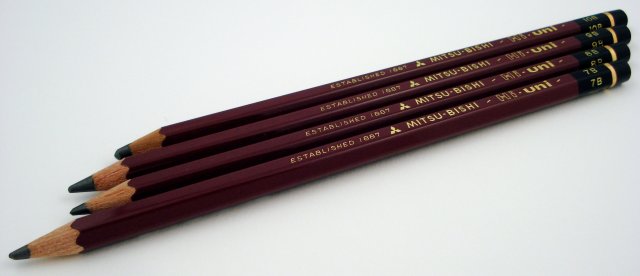
For drawing and shading, the super dark marks of the softest grade pencils can be very appealing. These soft grades typically go up to 6B in the ranges of many manufacturers. Anything beyond that can be very hard to find, especially as a traditional graphite pencil.
Some manufacturers offer very dark pencils in “carbon” or “ebony” lines – but these are typically composed of charcoal, carbon (soot or lamp black), or oil based, rather than graphite.
And some pencils that use the traditional B grades, like the Staedtler Mars Lumograph 100 7B and 8B, are carbon based pencils.
Tombow stops at 6B, as did Mitsubishi – until 2008, when they added 7B, 8B, 9B, and 10B to the Hi-Uni lineup.
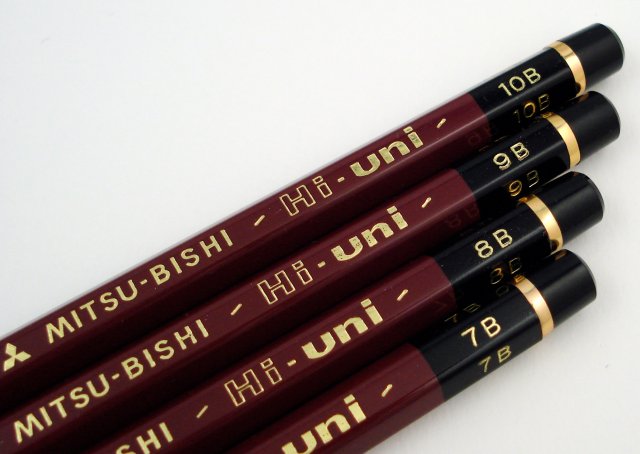
On Strathmore Bristol 300 series 260gsm (100lb) paper (acid free, white, smooth), trying the new Hi-Unis is like tasting county fair caramels – they are all amazingly smooth and delicious. The 9B and 10B have decidedly wider cores. On this paper, and others such as Fabriano Disegno 200gsm (94lb) paper (acid free, toothy), I have trouble really seeing any greater saturation or darker line among the various grades.
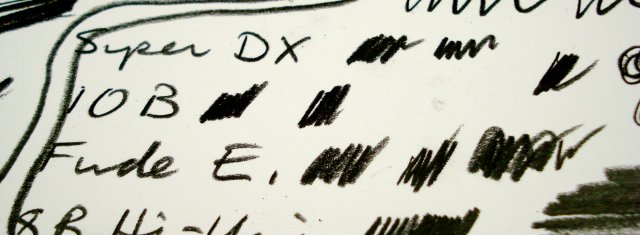
I think these pencils provide a really interesting and satisfying experience, which I recommend to anyone seeking to lay down exceptionally dark lines.
Now the above are the mainstream pencils – but there are (at least) three others. The fude enpitsu (brush pencil) is a gold finshed 10B pencil with a Hi-Uni cap. We took a look at it in 2008. I still agree that it a has a waxier feel. On paper, it may be just a shade lighter.
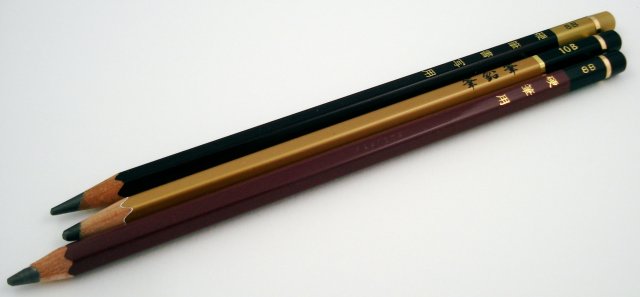
The Super-DX remains an amazing specimen of pencilcraft – the finish is just astounding. As noted previously, it has a very wide core. And a couple of years after first looking at the Super-DX, I still find it to be smoother than the “regular” 8B Hi-Uni, and the lead possibly just a degree more saturated.
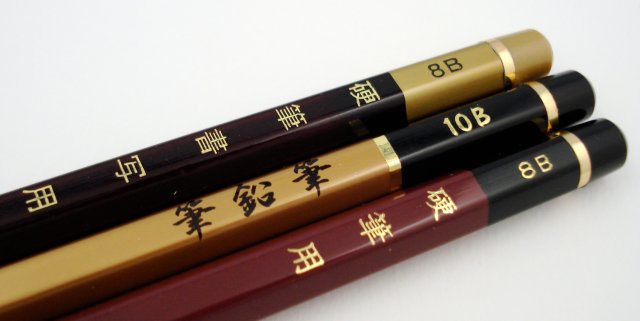
There is one more – a “secret” Hi-Uni 8B that predated the official 2008 extension of the Hi-Uni line. There is some background information at Brand Name Pencils. The “Kouhitsu Yo” has different markings and a wider core than the new 8B Hi-Uni, but otherwise seems to be the same pencil.
If you understand Japanese, it would be greatly appreciated if you could advise on the meaning of the text on these pencils.
Close up, the cores of course look very different from office/school pencils:
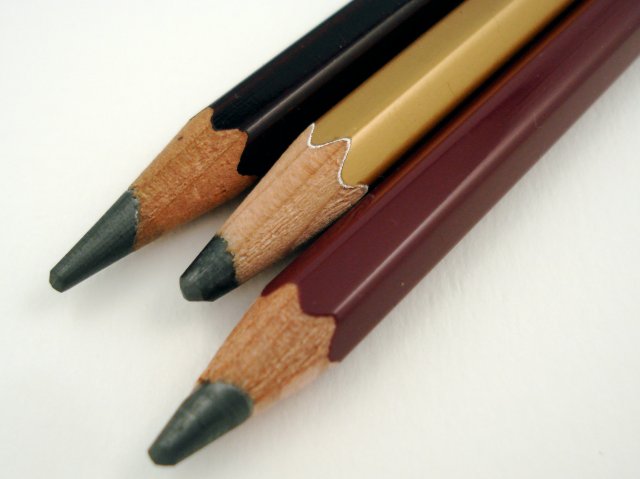
If you’ve used any of these super soft grades, please share your thoughts!
Related reading:
Mitsubishi 10B pencils: the brush pencil (fude enpitsu) and the Hi-uni (pencil talk, November, 2008)
Mitsubishi Hi-Uni Super-DX and Hi-Uni 8B pencils (pencil talk, November, 2008)
Mitsubishi 10B – Part 2 (Dave’s Mechanical Pencils, October, 2008)
Mitsubishi Hi-Uni 10B premium wooden pencil and Pencil Extenders (Lung Sketching Scrolls, December, 2008)

You already have most of the text. The top pencil has kohitsu shosha yo. Kohitsu is usually translated as a pen, literally, a hard brush. Shosha is transcription. Yo on the end of a phrase is ‘for the purpose of’. The bottom one is just kohitsu yo, with the transcription part omitted.
Kohitsu is the art of Japanese penmanship or calligraphy using a hard point rather than a brush.
The middle is the fude enpitsu, the brush pencil, probably used for the same purpose.
The kanji on the two 8B pencils are pretty much the same. ??, which is “hard brush” or pen/pencil, and ? which is “use”. The other two, ??, are “writing”. They are not very helpful in distinguishing the pencils, except that they are essentially penmanship pencils, much like the current 4B and 6B variants. The 10B is marked ???, which really is essentially just “brush pencil”. They all seem to be in the same general family of broad-writing pencils that are intended for the broad writing strokes taught in penmanship/calligraphy classes.
They are very neat looking pencils, and I regret that I don’t have them, since I can’t think of a use for them myself…
Heh…I guess I should have known my comment’s Chinese characters would come up as question marks. I guess a decent contextual reader could decipher which question marks refer to which kanji. :D
Douglas, thank you very much.
Robert, thank you as well for the attempt. I guess the blog is insufficiently unicode!
Holy smokes, 10B?! I wish Jet Pens sold open-stock Mitsubishi pencils.
Hello,
Do you know where I can buy these pencils from now as Jetpens no longer stocks them?
Thanks